Things to do
The Hall
Opening times
Open 30th March – 30th October 2025 on Sundays, Mondays and Thursdays.
Marvel at Old Mastersand make yourself at home.
A visit to Holkham Hall will bring to life the stories of a bygone era.
Nestled within 25,000 acres of rolling parkland, Holkham Hall is an 18th-century Palladian style house, based on designs by William Kent and built by Thomas Coke, 1st Earl of Leicester. The current Earl and his family take great pride in opening their doors and sharing the treasures within.
You’ll find the Marble Hall a truly breath-taking introduction to your visit, with its impressive 50ft dome ceiling and elegant walls of English alabaster – not marble as the name suggests!
A grand staircase leads to a myriad of state rooms, from the Saloon with its rich, red velvet-lined walls, gilded coffering, and lofty ceiling; to many sumptuous bedchambers where royalty once lay; state dining rooms adorned with exquisite porcelain; galleries of statuary and art by the Old Masters; libraries bursting with books and manuscripts; and of course, the Old Kitchen with its rows of polished copper pots, pans and moulds.
Holkham has remained largely unchanged since the late-18th century, and much of what you will see is as Thomas Coke intended. Each generation has left a little something of themselves in the house, right up to the present day.
For accessibility information, check out our Detailed Access Guide on the AccessAble website.
The Marble Hall
Mainly constructed from Staffordshire alabaster, which is softer and more translucent than marble, the stone was transported to Holkham by barge and ship. The splendid colonnade was inspired by the Temple of Fortuna Virilis and the breathtaking ceiling (which is more than 50ft in height) by the Pantheon, both in Rome. The statues in the niches around the hall are predominantly plaster copies of ancient Greek and Roman Gods, and were brought home from Italy for the first Earl of Leicester.
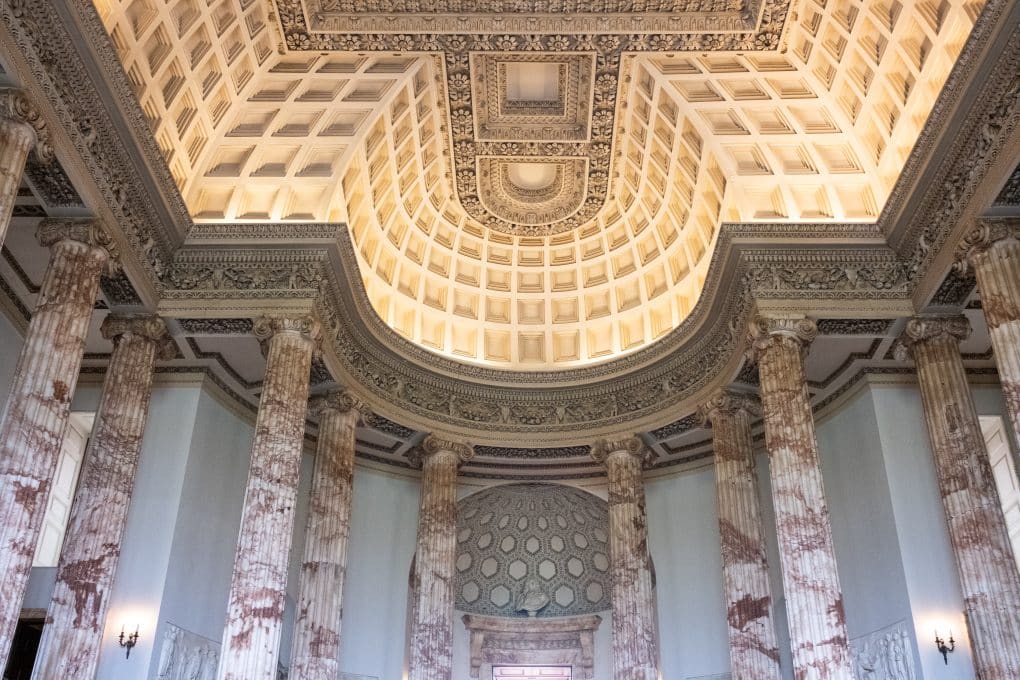
The Statue Gallery
The Statue Gallery contains perhaps the most complete collection of Classical statuary in a private house in Britain. The purpose of this room was to show off this collection and the niches were built to the dimensions of the statues. All the statues are Roman and sculpted between the 1st and 3rd centuries AD, except for the 18th century medallion of Julius Caesar above the fireplace.
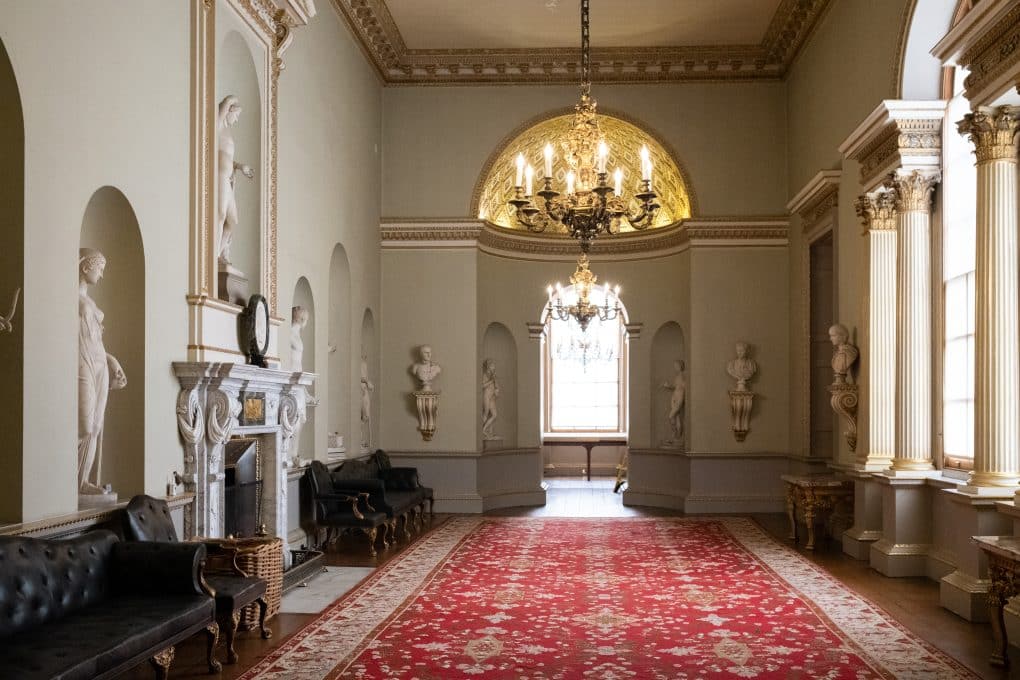
The Parrot Bedroom
This room in Stranger’s Wing forms part of the principal guest accommodation area in one of the private wings of the Hall. The room takes its name from the painting by Frans Snyders, of parrots and macaws, which hangs by the bed. Guests of the Earl and Countess of Leicester often stay in this bedroom and it is therefore not always open to the public.
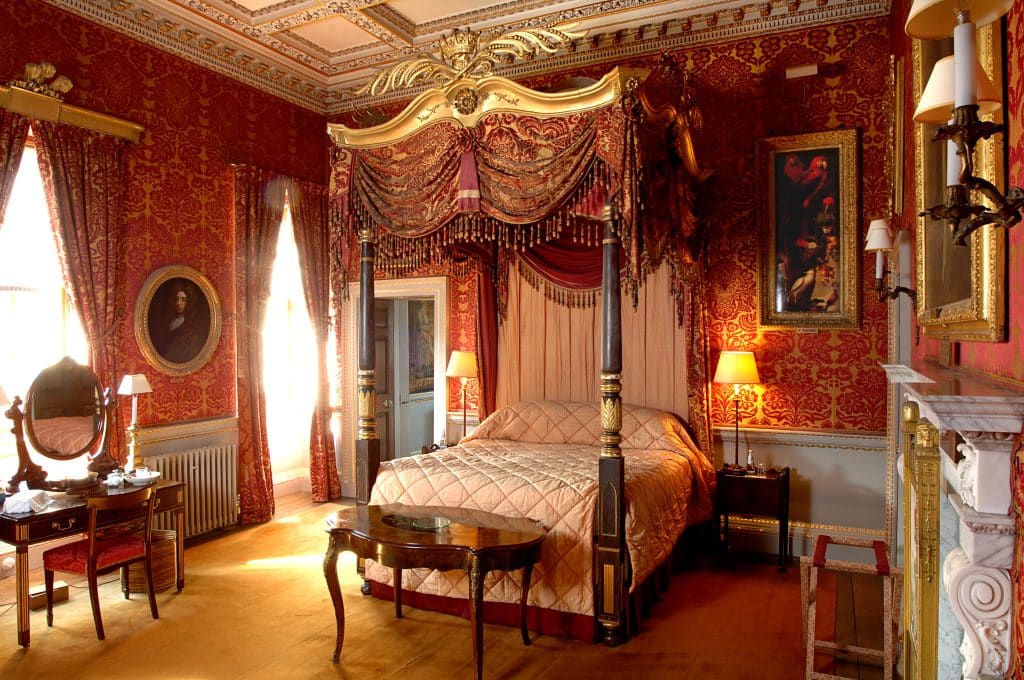
The Libraries
The Libraries form half the area of the first floor of Family Wing and are known as the Manuscript, Classical and Long Library. Until the early 19th century, the Manuscript Library was the principal bedroom, which gave Thomas William Coke convenient access to his library at any time of the day or night. Some of the manuscripts are from Sir Edward Coke’s original library. The Classical Library is home to a number of early printed books. The Long Library, designed by William Kent, is 54ft long by 18ft wide.
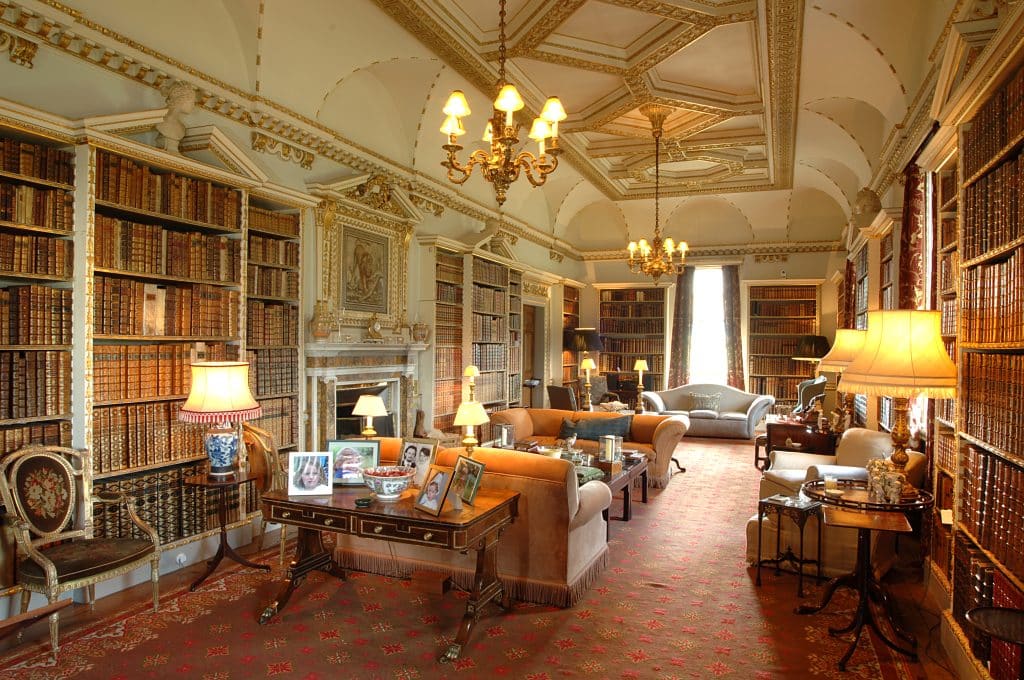
The Saloon
Oppulent and warm, this room is designed to welcome guests after the classical and cool grandeur of the hall. It features two great master paintings – Peter Paul Ruben’s depiction of the return of the holy family from Egypt, and Anthony van Dyck’s portrait of the Duke of Arenburg. The original crimson wall hangings are made from a mixture of wool, linen and silk, known as caffoy. The Saloon is still used today for the same purpose for which it was designed – entertaining large numbers of people, including weddings and our Holkham by Candlelight.
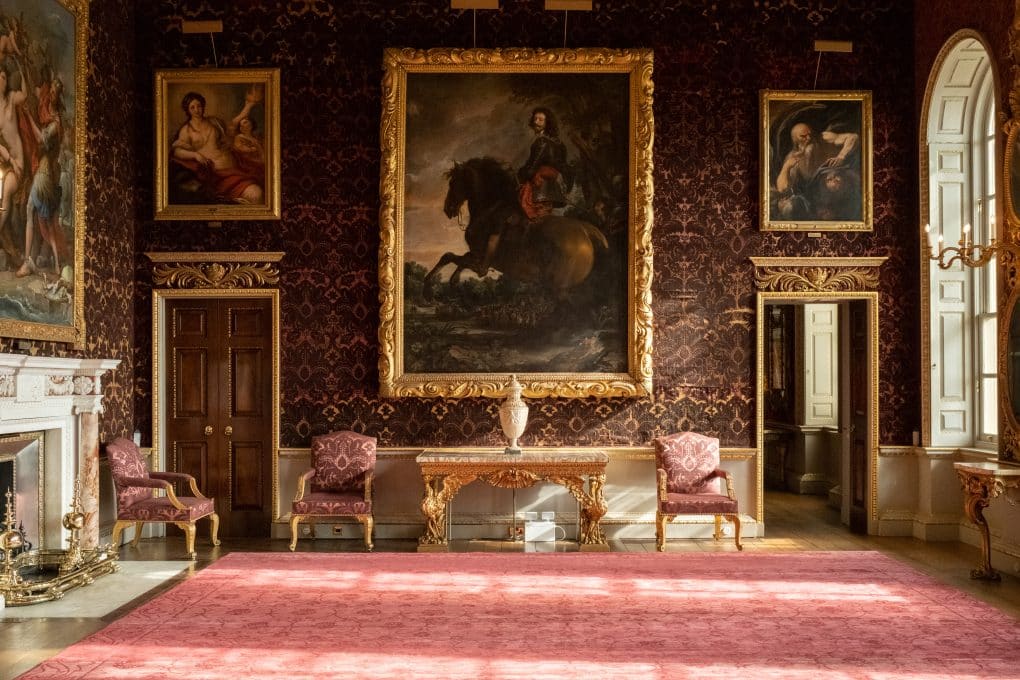
The Landscape Room
Hung in the 18th century manner, this room contains 22 Old Masters including a collection of seven paintings by Claude Lorrain (1600-1682), the great French landscape painter. Claude was most probably the most sought after by English collectors, not least because his idyllic views provided the models which many patrons attempted to emulate in the creation of their own parks and gardens.
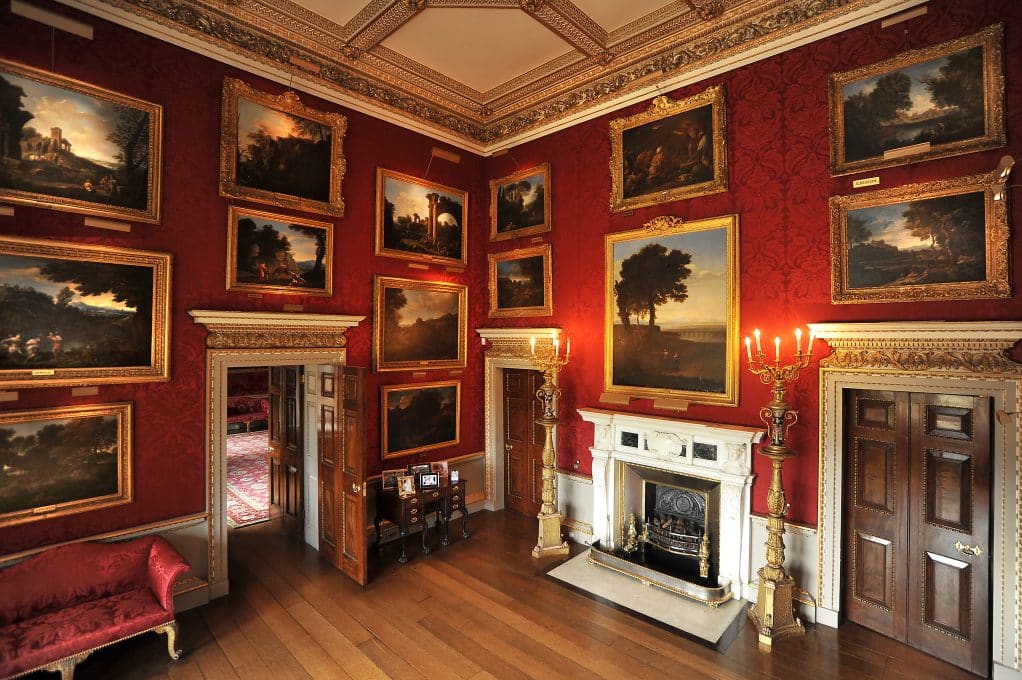
The Chapel
During the summer months, church services take place in the church of St Withburga in Holkham Park; but as the church has no heating, the congregation moves to this chapel for the winter months, where a service is held every Sunday. Up until the Second World War, morning prayers were held here each day at 9am. Lord Leicester’s chaplain took the services and everyone in the house – family and servants – had to attend.
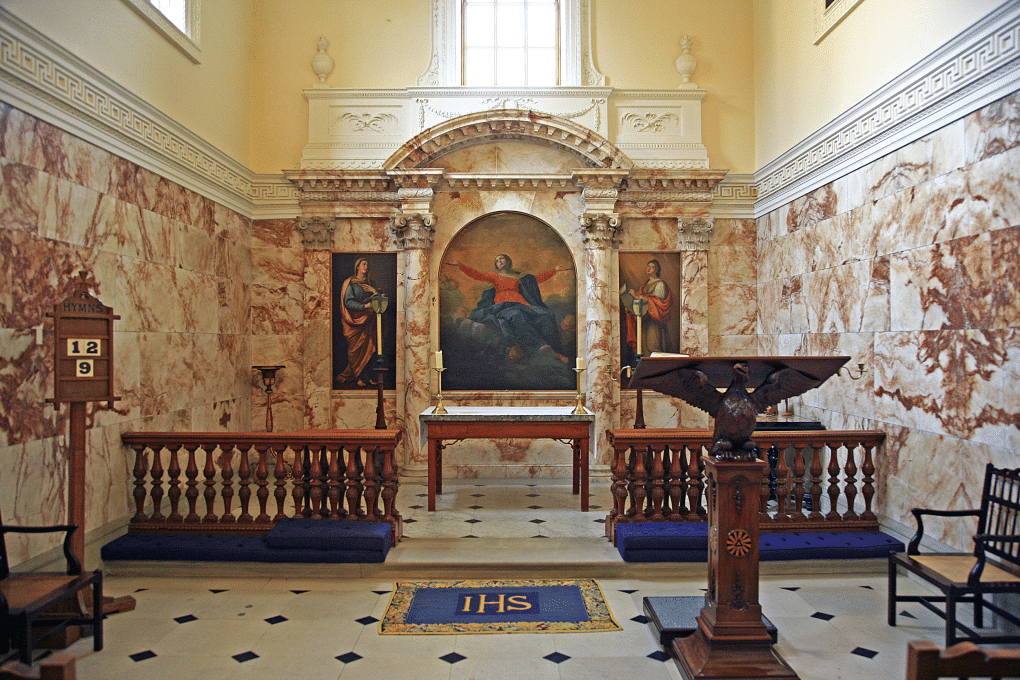
The Venetian Bedroom
This sumptuous bedroom, still in use for guests of the Earl and Countess of Leicester, has a Spanish travelling bed. Particularly striking is the Venetian window looking out to the north and the gilt work on the ceiling, overmantel, and columns. The tapestry panels depict Venus and Cupid and are based on paintings by Francesco Albani. All portraits in this room are of women, including Dame Rachel wife of Sir John Croke and Mary, Princess of Orange, daughter of Charles I.
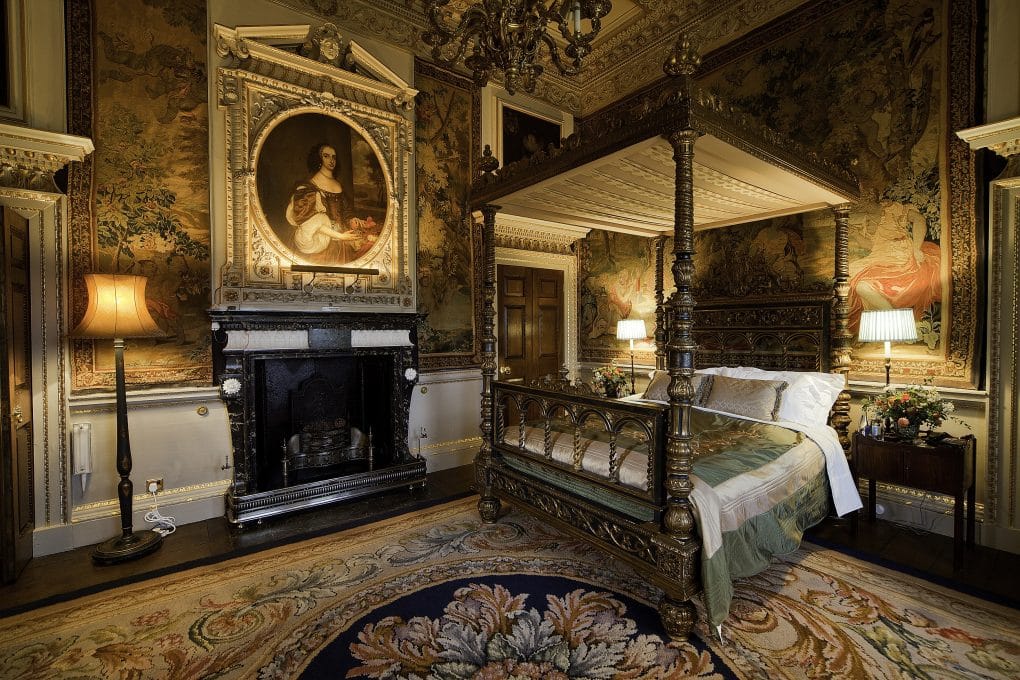
The Green State Bedroom
The Green State Bedroom is the most important bedroom in the Hall. Kings, Queens and nobility of all ranks have slept here over the centuries. The tapestries on either side of the fireplace are late 17th-century and were woven by the great Flemish weaver, Albert Auwercx, to represent the continents of America, Africa and Europe. Paul Saunders and George Smith Bradshaw wove the other tapestries in the room. The panels on the east wall represent Asia, while the two strips on either side of the bed represent sleep and vigilance.
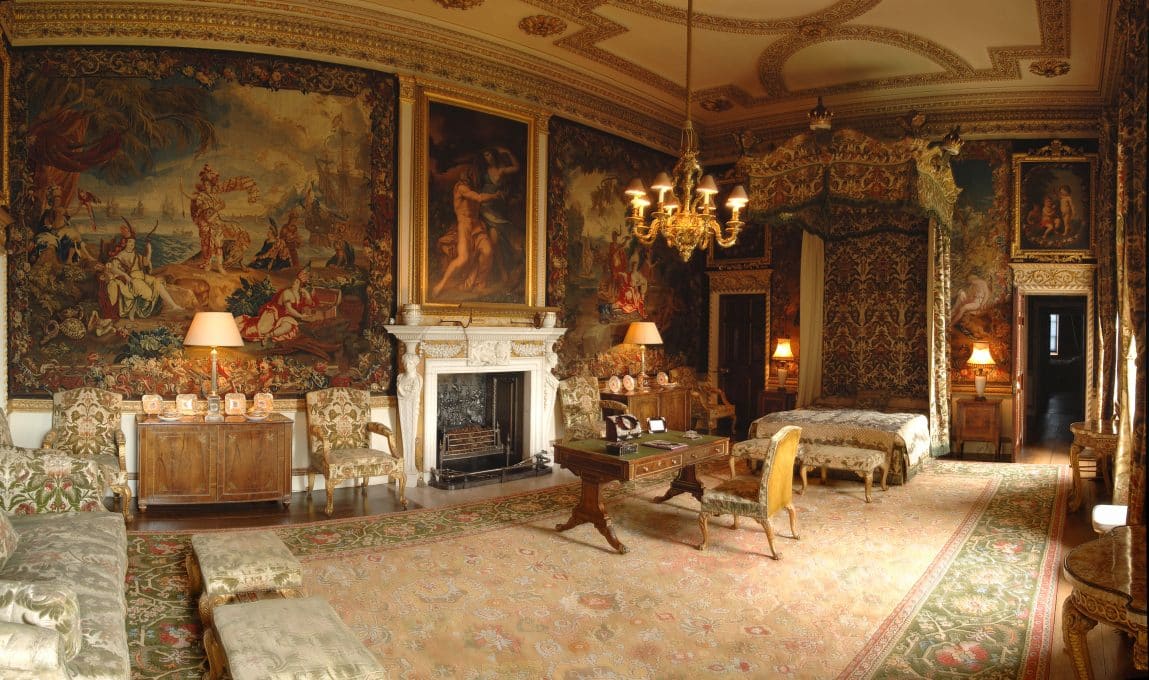
The North State Sitting Room
This room is dominated by four large Brussels tapestries, which were probably woven by Gerard Peemans at the end of the 17th century. The tapestries depict the sun’s annual progress through the signs of the zodiac. Although incomplete (the summer months are missing), there are no records of any more tapestries being bought to complete the set.
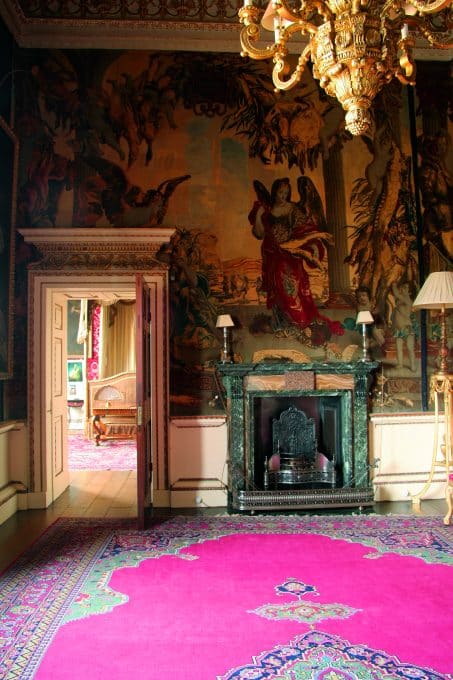
The Old Kitchen
The Old Kitchen first came into use in 1757, when the old Elizabethan manor house that used to stand in the Park, was demolished. Refurbished by the second Earl in the 1850s, this kitchen was used up until the Second World War. Over the centuries, huge numbers of people have been fed by meals cooked here. Historically, the kitchen staff never saw the staterooms, and no unauthorised staff were allowed into the kitchen. There are two serving hatches at one end of the room, one for hot and one for cold food. Orders were spoken through a voice pipe located to the right of the door frame.
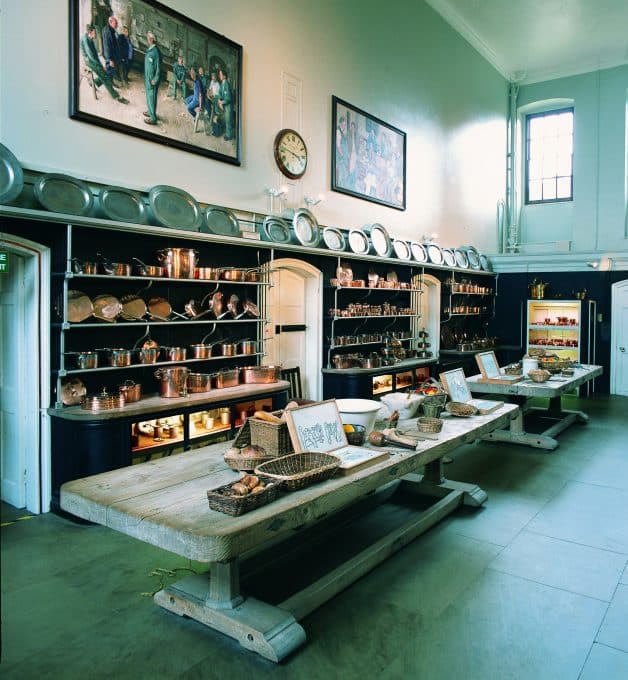
The Old Servants’ Hall
Since 2019, Holkham Hall The Old Servants’ Hall has been open for visitors to see. Whilst used for many recreational gatherings, this room holds its own place in history for its exotic collections. Home to an extensive and well-mounted natural history collection of over 120 examples of mostly local species, you will also find a Billiard Table, George II library armchairs, George III tub chair and Georgian tables.
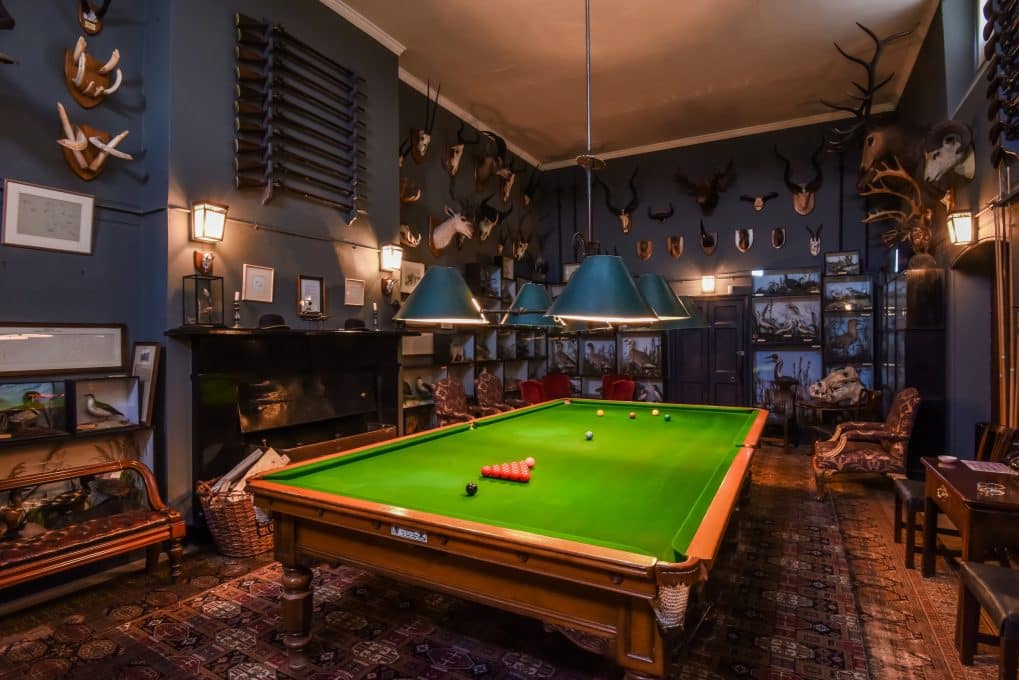
The Fountain
The Grade II listed fountain to the south of the Hall depicts Perseus and Andromeda, a Greek legend where Perseus rescued Andromeda from being sacrificed to a monster to appease Poseidon, the Sea God. The fountain was created by Charles Raymond Smith and was built circa 1850. Using recirculated and filtered water from the bowl of the fountain, the water is pumped through the twenty-five water jets secluded in the sculpture. An impressive sight to behold when the Hall is open.
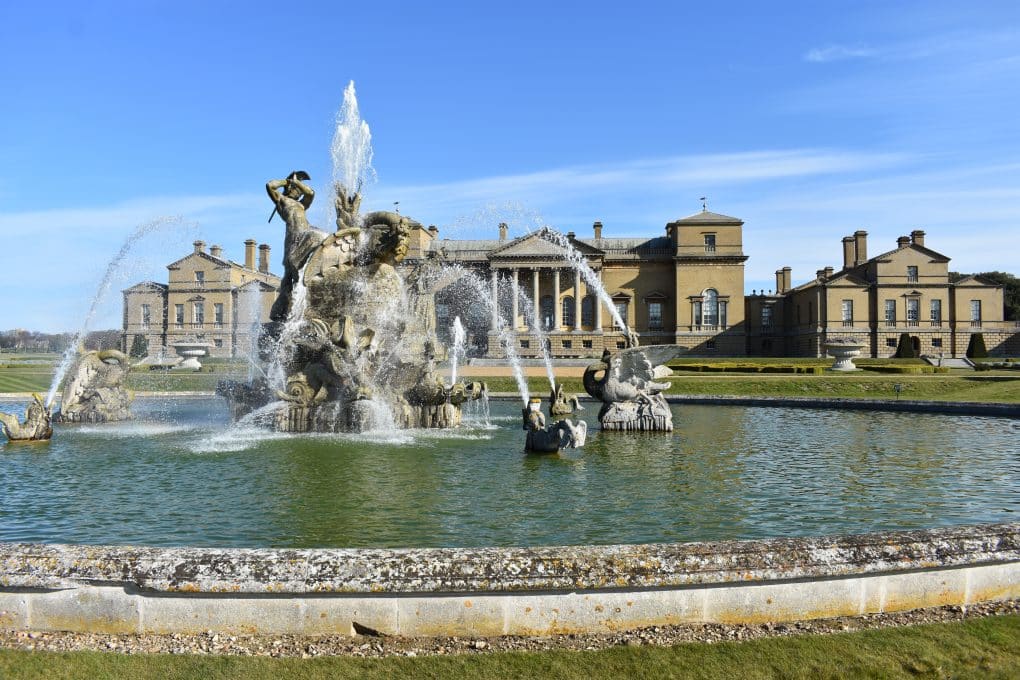
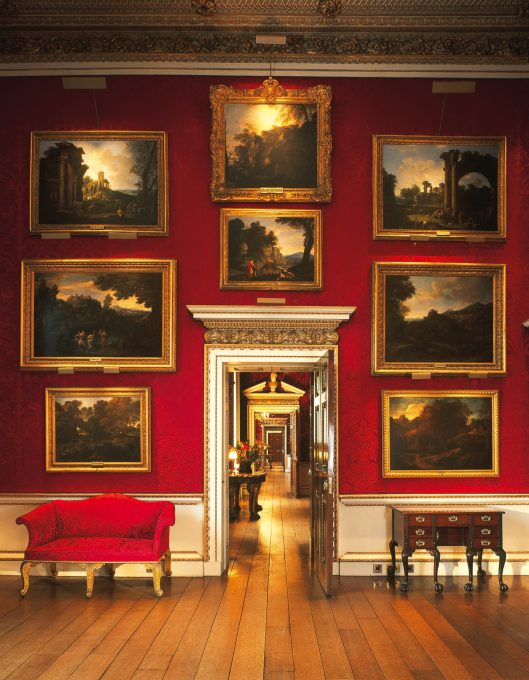
Paintings
Thomas Coke was an avid collector of art and had a passion for landscape painting. Holkham contains one of the greatest private collections of works by the celebrated French landscape artist Claude Lorrain, which are primarily displayed in the Landscape Room. He also collected works by Vanvitelli, Dughet, Rubens, Van Dyck, Carlo Maratta and many others amongst the most fashionable painters of his time, creating his idea of a perfect temple of the arts. Although later Earls added to the collection and moved pictures around to their taste, the 7th Earl recreated Thomas Coke’s original hang as far as possible.
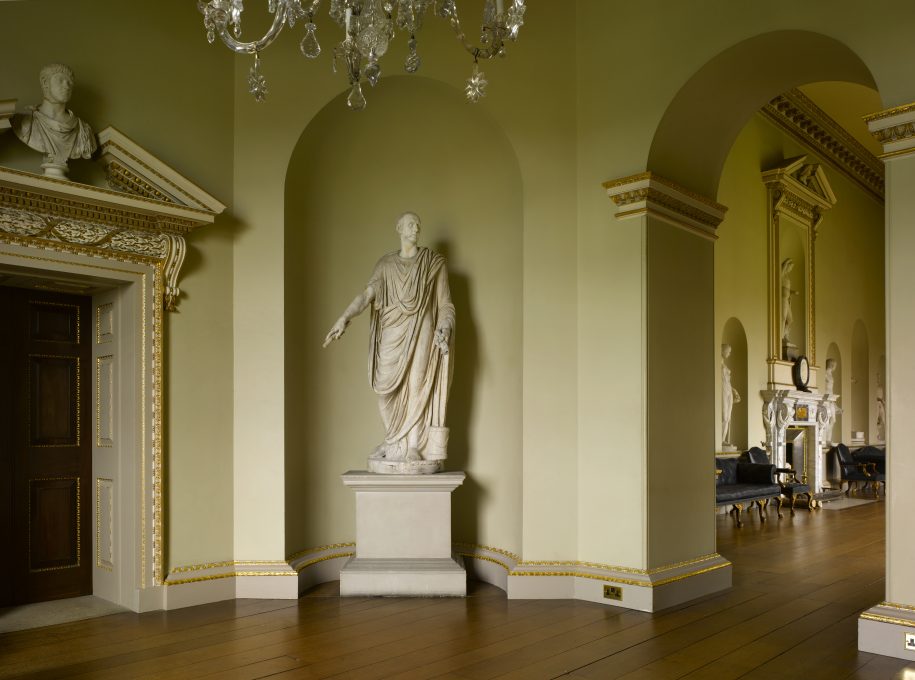
Antiquities
Holkham contains one of the most important private collections of Roman statuary in the country. The collection was created by Thomas Coke, who acquired works dating from the 1st to the 3rd century AD. He designed the Statue Gallery specifically to display his collection, and it still contains iconic works such as Diana and Marsyas. Smaller works, such as portrait busts, are arranged around the house. The oldest item in the collection, an important mosaic from the 2nd century BC, however, was not acquired by Coke, but by his great nephew, Thomas William and can be found in the Long Library.
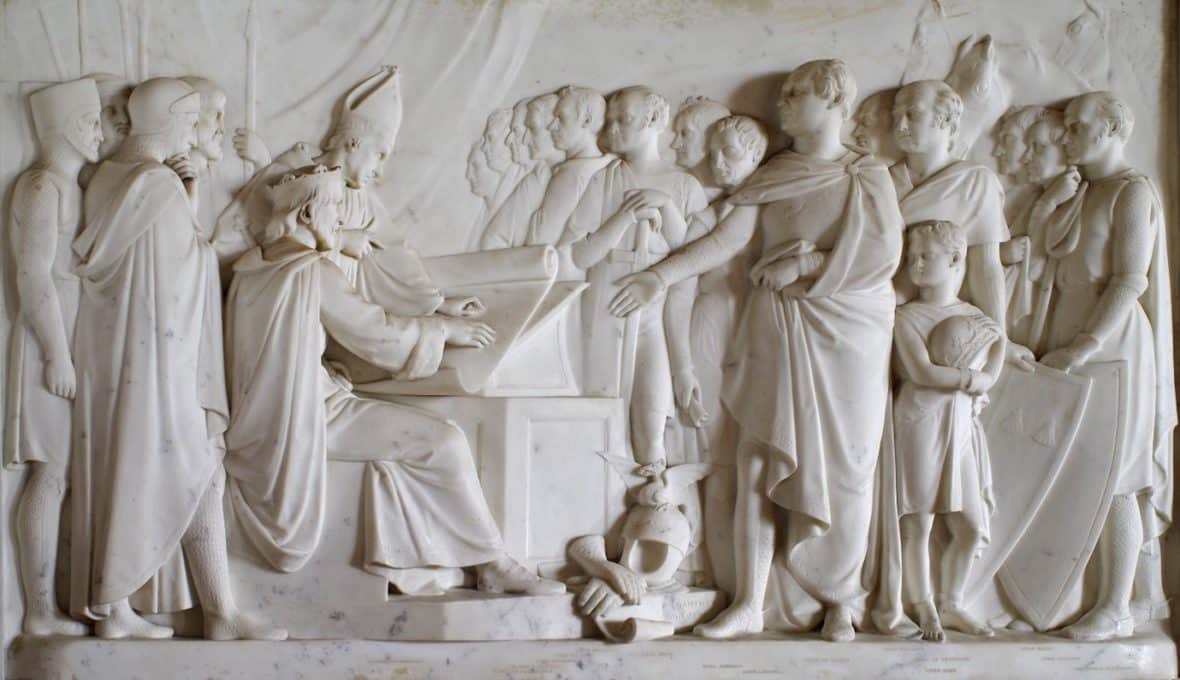
Neoclassical sculpture
Since the rediscovery of classical art during the Renaissance, collectors had acquired casts of original Roman sculpture. Thomas Coke purchased many plaster copies of statues seen on his Grand Tour, which are displayed in the Marble Hall, where they are carefully arranged into oppositional pairings.
Also found in the Marble Hall are four sculptural reliefs by British sculptors such as Francis Chantrey, Joseph Nollekens and Thomas Banks. These were collected by Coke’s great-nephew, Thomas William, who is known to have patronised many contemporary artists. They are arranged to convey political meaning, rather than the artistic taste of his ancestor.
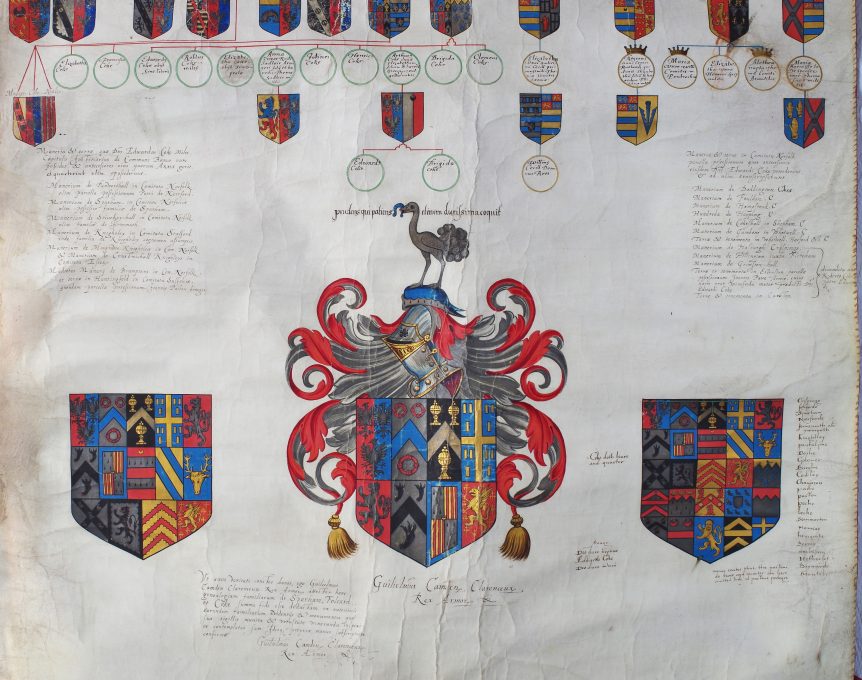
Archives
The Archives at Holkham provide a written account into all of life across the Holkham Estate. Stretching back to the mighty Book of Conveyances – used by Sir Edward Coke, Lord Chief Justice to record his land purchases to the account book that details all of Thomas Coke’s expenditures on his Grand Tour to records of tenants living and working on the estate over the last four centuries to the present day. To uncover the history of the Estate and its people there are in excess of 100,000 documents that can be consulted in the Archives Reading Room.
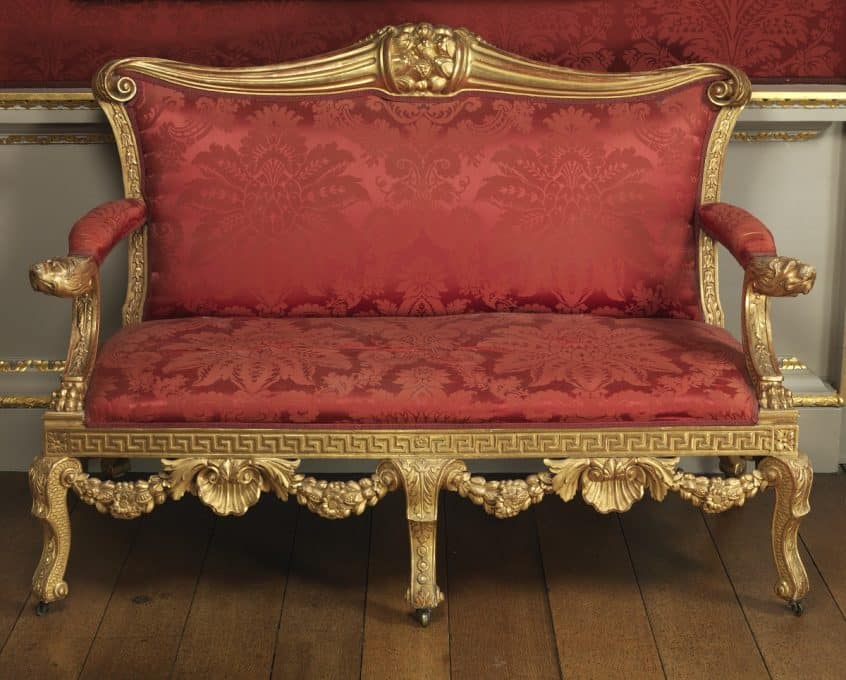
Furniture
The State Rooms contain much of Holkham’s original 18th-century furniture. Thomas Coke purchased from many of the most fashionable London makers – such as Paul Saunders and Benjamin Goodison – as well as using the talents of local craftsmen. The collection was acquired over a 20-year period and from numerous different makers. Despite this, all the furniture conforms to the same underlying idea, showing Coke’s excellent eye for design and creating one of the most complete Palladian interiors in the country. Highlights include the remarkable tables in the Saloon, topped with micro-mosaics said to come from the Villa Tivoli.
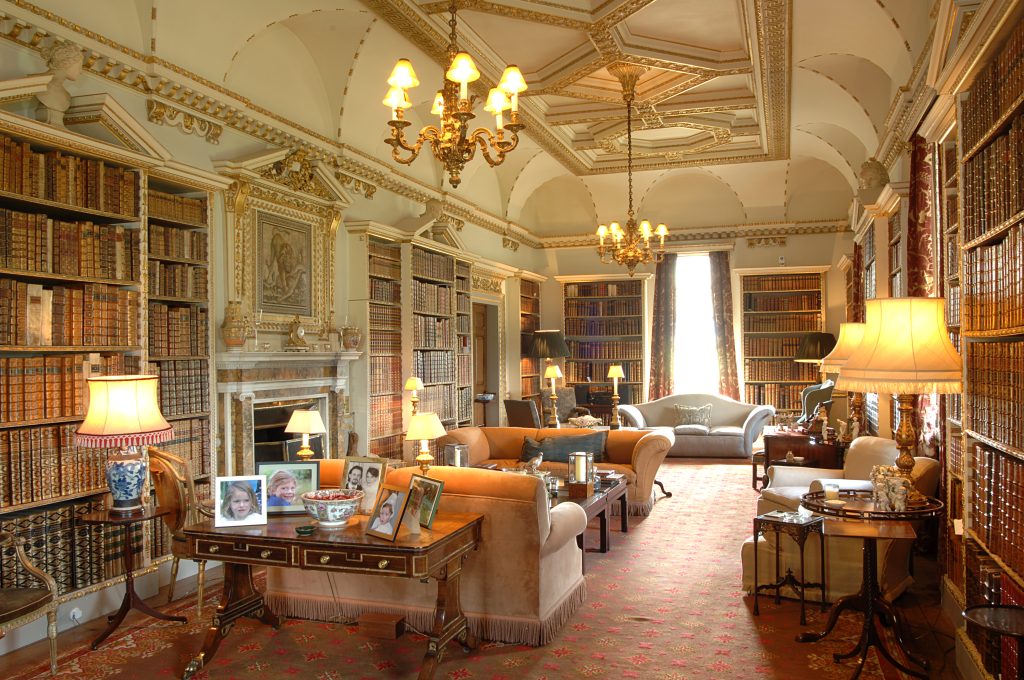
Library
The library (over 10,000 rare books and about 550 manuscripts) comprises the library of Sir Edward Coke, Lord Chief Justice, the vast collection that Thomas Coke purchased on his Grand Tour, and few important additions by subsequent generations. Medieval copies of Magna Carta with Statutes of England and illuminated Renaissance manuscripts (Livy in particular) stand aside precious 15th- 18th- century editions (Pliny, Tyndale, Palladio, Aesop, Piranesi) and the Cosmographia, a unique 113-volume series of maps of the heavens and the earth. Leonardo’s Codex Leicester (now Bill Gates) owes its name to the 1st Earl of Leicester, who acquired it in 1717.
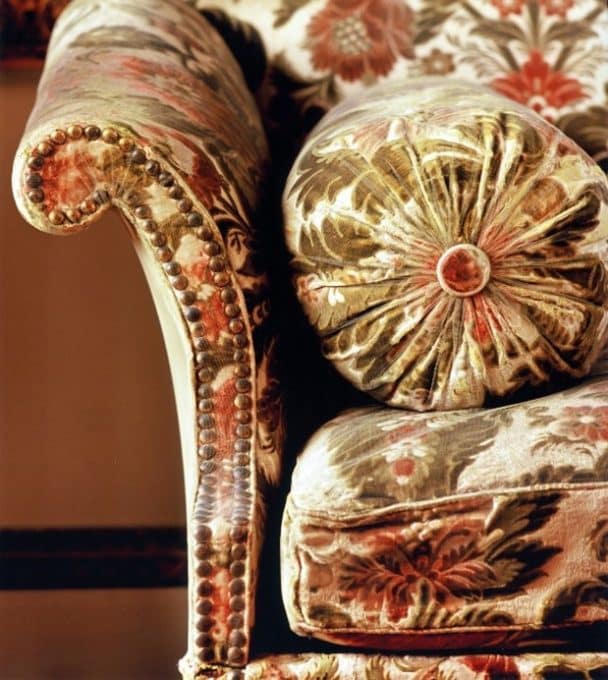
Textiles
Historically, textiles were used to create visual hierarchy, with the costliest fabrics reserved for the highest status rooms. Genoa velvet was the most expensive, followed by silk velvet, wool velvet and damask. As the most important room, the Green State Bedroom is upholstered with Genoa velvet from the 1750s. The South Dining Room retains both original silk velvet upholstery and wall coverings, whilst the Saloon, the first room in the visual sequence, is hung with 18th-century wool velvet, called caffoy. In 1982 the 7th Earl commissioned new silk damask wall coverings for the Landscape Room, replacing the degraded 18th-century hangings.
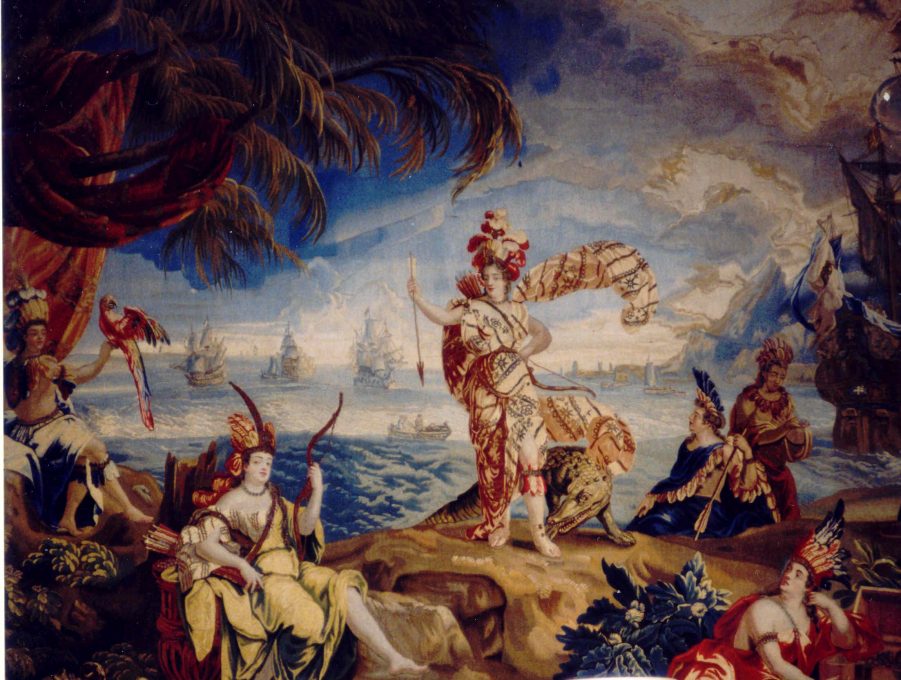
Tapestries
Tapestries were high status items often used in the 18th century to decorate bedrooms. The Green State Bedroom contains a wonderful series of late-17th century tapestries depicting three of the four continents; Thomas Coke commissioned English upholsterer Paul Saunders to complete the series in 1757. More English tapestries can be found throughout Strangers’ Wing, decorated with pastoral scenes made popular by the artist Antoine Watteau. Not to be outdone by her husband, Lady Margaret Coke purchased the tapestries which today hang in the North State Sitting Room, a series of 17th century Brussels tapestries illustrating the signs of the zodiac.
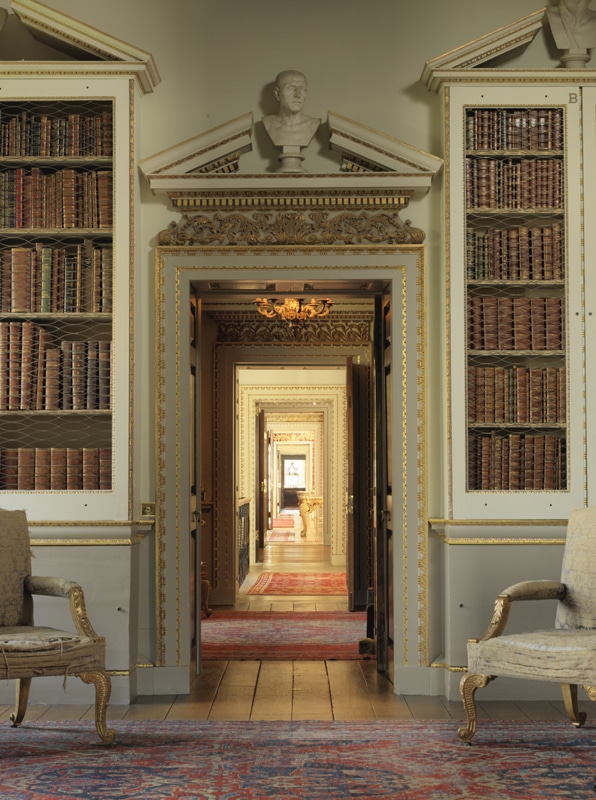
Contact us
We love sharing our collection, and welcome visits by scholars and researchers.
Our image requests are handled by Bridgeman Art Library. If you cannot find what you are looking for through them, please contact us.
Please use the buttons below to get in touch and find out more.
Any requests for loans should be initially directed to the Art curator.
